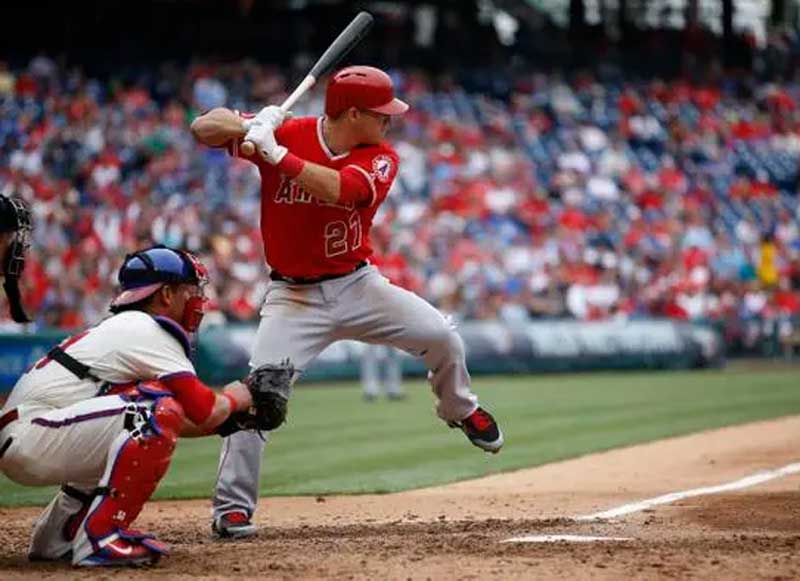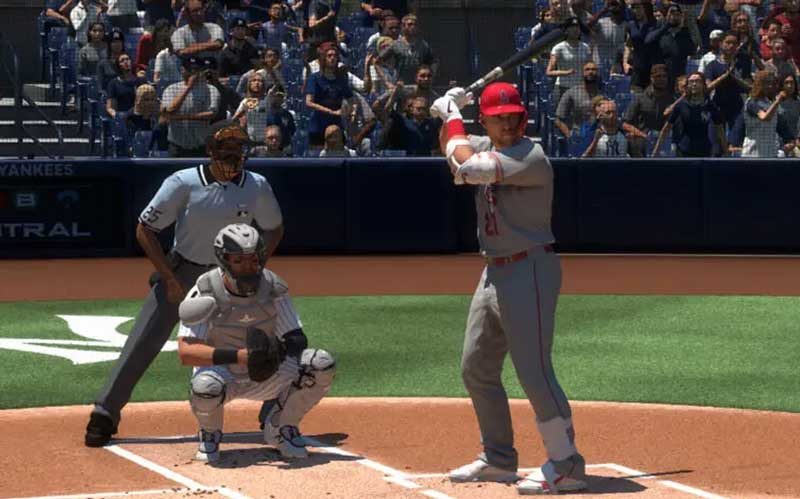In baseball, a batter’s stance is a fundamental aspect of their hitting technique, and it can be classified into three primary categories: open, square, and closed. Each of these stances has its own advantages and considerations:
Open Batting Stance:
- Description: In an open stance, the batter’s front foot is positioned farther away from home plate than the back foot. The front shoulder is also typically pointed more towards the pitcher.
- Advantages:
- Increased Vision: An open stance allows the batter to see the pitcher, the mound, and the field better. It provides a broader view of the pitcher’s release point and fielders.
- Easier Timing: Some hitters find it easier to time pitches with an open stance, as it can help them better track the ball’s trajectory from the pitcher’s hand.
- Considerations:
- Reduced Power: Open stances may limit a batter’s ability to generate power, as it can be challenging to fully rotate the hips and generate torque in this position.
- Vulnerability to Inside Pitches: Batters in an open stance may be more susceptible to inside pitches since they have less coverage of the inner part of the strike zone.
Square Batting Stance:

- Description: In a square stance, the batter’s feet are positioned roughly parallel to the baseline. The shoulders are also aligned more towards the pitcher.
- Advantages:
- Balanced: A square stance provides a balanced foundation for hitting, allowing the batter to pivot and rotate their hips effectively, which can lead to good power generation.
- Versatility: Square stances are versatile and can be adapted to various pitch locations and types.
- Considerations:
- Limited Vision: While it offers a reasonable balance between power and vision, a square stance may not provide as wide a field of view as an open stance.
- Timing Challenges: Some hitters might find it slightly harder to time pitches with a square stance due to its neutrality.
Closed Batting Stance:

- Description: In a closed stance, the batter’s front foot is closer to home plate than the back foot. The front shoulder may also be turned more towards the plate.
- Advantages:
- Power Potential: A closed stance can facilitate a quicker hip rotation, potentially increasing power for hitters who can effectively utilize this setup.
- Pull Hitters: It is often favored by pull hitters who aim to drive the ball to the side of the field where they have more strength.
- Considerations:
- Limited Vision: Like the open stance, a closed stance may limit a batter’s vision of the pitcher and field, making it harder to track pitches and fielders.
- Vulnerability to Away Pitches: Closed stances can make it more challenging to cover pitches on the outer part of the strike zone.
It’s important to note that there is no one-size-fits-all stance in baseball, and each player may adopt the stance that suits their style and strengths. Additionally, batters may adjust their stances during at-bats or throughout their careers to adapt to different pitchers and situations. A batter’s stance is a personal choice that can have a significant impact on their hitting success, and it often involves a balance between vision, power, and comfort.
